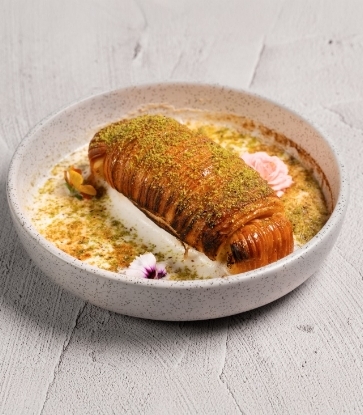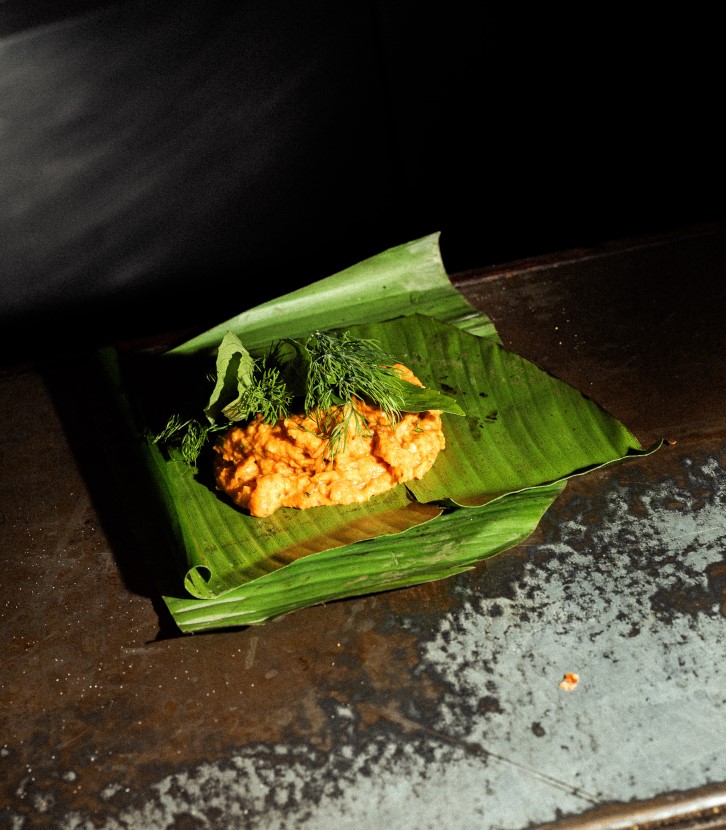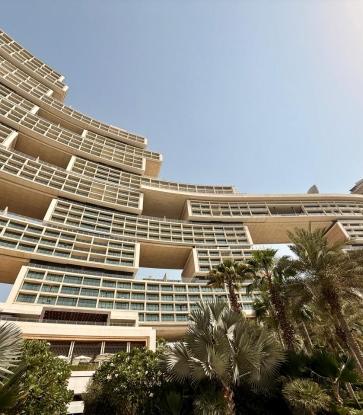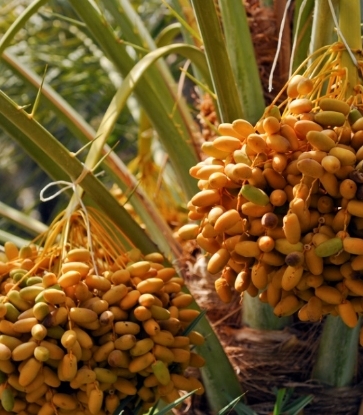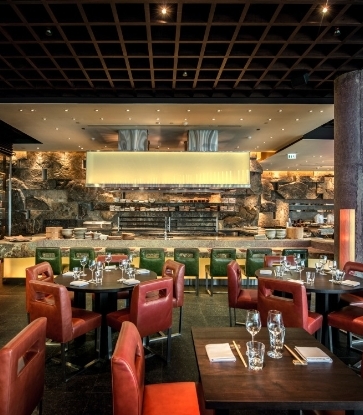Eid-Al Adha is celebrated amongst Islamic communities from different parts of the world. While the “Feast of Sacrifice” holds traditions that vary across Muslim households, there is one thing that unites them: food. Every year, families gather over a period of two to four days to celebrate the day that follows the annual Hajj pilgrimage to Mecca and honours Prophet Ibrahim’s faith.
Communities, ranging from Emirati to Levantine, Indian to Iranian and Turkish, celebrate this religious holiday by sharing meals together across Dubai. While their culinary traditions differ in flavour and customs, all their main dishes champion a sacrificial lamb or meat among large spread delicious foods. During this time, families bond over hearty meals, desserts and exchange gifts.
In this article, we explore how Dubai’s multicultural communities celebrate Eid al-Adha and where you can enjoy their traditional dishes.

Emirati
How they celebrate: Like any festive holiday, Eid al-Adha is celebrated by Emiratis through food, prayer and gifts, or Eidiya, for little ones. Traditionally, men dress up in their national attire known as the Kandoora, a long white robe, which they either buy for the event or they dye an old one using walnut oil and cardamom. As for the women, they decorate their hands with Henna and use perfumes to adorn their festive outfits. When it comes to food, Emirati families cook up their traditional dishes in big portions to feed their whole family. The most popular is the slow cooked Lamb and rice dish called Ouzi. It’s prepared by seasoning the lamb in special Bezaar spice (an Emirati spice blend), lemon juice, saffron water and ghee and having it cook for 2 hours in the oven. It’s paired with a Hashwa (a spiced split pea stuffing) and spiced rice. As for dessert, everyone’s favourite is Logaymat – crispy from the outside, soft and doughy from the inside. These fried dough ball covered sweet, sugary syrup is a classic dessert dish Emiratis love to celebrate with.Where to eat: Authentic Ouzi can be tasted in Emirati restaurants across Dubai. You can enjoy a playful twist on the Emirati dish at MICHELIN-selected restaurant Siraj. Dubbed “Mom’s Ouzi”, the lamb and rice dish is served wrapped in a thin, crispy bread and topped with toasted pine nuts. For more a traditional take, visit Bib Gourmand restaurant Al Khayma Heritage Restaurant and MICHELIN-selected restaurant Al Fanar, where they champion an Ouzi that is more in tune to their local heritage. For those wanting to sweeten their tooth after their main course, you’ll be able to add Logaymats to your order at all three MICHELIN outlets.

Indian
How they celebrate: Also known as Bakra Eid or Bakrid, Eid Al Adha is a day celebrated by Muslim Indian families following the last that day of the Hajj Pilgrimage. Similar to Emirati traditions, Indians buy new clothes to wear for the festivities and gather around the table to feast either the sacrificial goat or lamb. Lamb Biriyani is usually the star dish of the feast. The iconic Indian dish combines semi-cooked rice, flavourful spices and lamb in a clay pot cooked over low heat to bring together each ingredient’s rich tastes. Another feast-favourite is chaapein, better known as lamb chops. Chaapein is marinated overnight in a mixture of yogurt, ginger/garlic paste, lemon juice, garam masala, cumin, coriander powder, black pepper and red chili, and can be cooked in an oven or grill the next day.Where to eat: A staple in Indian cuisine, Lamb Biriyani can be enjoyed in almost every Indian restaurant. Bib Gourmand restaurant, Indya by Vineet, serves lamb biryani in two ways. Chef Vineet Bhatia’s lamb biryani kofta is made from minced lamb meats rolled into balls and topped on a curry sauce called Rogan Josh and served with their signature Raita (yogurt sauce) to balance out the heat. Alternatively, you can enjoy a more traditional take with the Parda Lamb Biryani cooked in a small copper pot enclosed by a flatbread dough, this technique ensures that all the flavours are enriched during cooking. As for the classic Lamb Chops, visit MICHELIN-selected restaurant, Masti, located in The Dubai EDITION hotel. Their Coorgi Lamb Chop is marinated in warm coorgi spices (a mix of staple Indian spices), cooked on a coal grill and served with a kidney fat sauce that elevates the dish’s already juicy composition.

Iranian
How they celebrate: Known to Iranians as Eid-e-Qorban, Eid Al-Adha is a time that gathers friends and family around the dinner table to enjoy a meat-filled fest. Koobideh, or lamb kebabs, are eaten alongside Tahdig, which is a crunchy saffron rice dish that can be mixed with berries and other meats. This balance of sweet, salty and sour comes together perfectly in this feast made to share. Despite it being called the “Salty Eid,” no feast is complete without sweets. Faloodeh ice-cream is must amongst Iranian families. Similar to sorbets, this dessert is made from thin vermicelli-like starch noodles that have been mixed with a semi-frozen syrup of rose water and sugar.Where to eat: Enjoy flavour-packed koobideh kebabs in Bib Gourmand restaurant, Shabestan. These minced lamb kebabs are cooked on the grill and is served with a mix of white and saffron rice, buttered to perfection, and well as grilled onion and tomato. As for Opening of the Year Award winner, Ariana’s Persian Kitchen serves their koobideh on top of Persian flatbread and served alongside a colourful portion of walnuts and fresh and grilled veggies. With such a hearty meal, Shabestan’s faloodeh ice cream is a must have to close the feast. Citric and sweet, it’s the perfect palette cleanser after all the savoury meats.

Levantine
How they celebrate: Once part of the Fertile Crescent, the Levantine region of the Middle East consists of five countries: Iraq, Jordan, Lebanon, Palestine and Syria. While each of these countries celebrate Eid Al-Adha with slight variations in food and background, sharing culture and love food is at the core of their family environment. One popular dish in Iraq is Tashreeb – a rich lamb stew served with bread and made with Iraqi-spiced, braised lamb and chickpeas, the hearty dish is served in big portions and is made to share with loved ones during festive occasions. In terms of dessert, Levantine cuisine is master of its craft. With flavour profiles touching on nutty, sweet and sour, this region’s desserts come in many forms. Perfect for sharing, Kunafa is the signature dessert across most Levantine households. Baked in the oven and then covered in rose water or orange blossom syrup, this layered-sweet dish is typically made with melty cheese placed between either shredded phyllo dough or a flour/semolina dough. Toppings can include crushed pistachios as well.Where to eat: A stew like Tashreeb is not easy to find, but luckily Bib Gourmand restaurant, Ninive is one of the places you can enjoy this Iraqi dish, with a twist. Instead of a stew, this Middle-Eastern restaurant’s variation is a platter serving up a spiced lamb shoulder, slow-cooked for more than seven hours, on top soft flatbread made to soak up the meat’s juices and topped off with some chickpeas. As for the Kunafa, Bib Gourmand restaurant, Bait Maryam, is one of the many places to enjoy this classic Levantine dessert. Taking inspiration from the recipes of her childhood, Palestinian-Jordanian chef Salam Dakkak gives us two versions of the iconic dish. The Kunafa Rolls uses ashta (a clotted cream) instead of cheese and garnishes it with some pistachio, while the more traditional version she makes for her diners is made with Nabulsi cheese sitting in between the crunchy, buttery shredded phyllo dough, and decorated in diced pistachios.

Turkish
How they celebrate: During Eid Al-Adha, or Kurban Bayrami, Turkish families reunite in their hometowns and rejoice together through feast and prayers. Throughout the festive four days, both young and old family members spend their mornings and evenings together, by either going to prayer or enjoying a delicious range of meaty foods. While Turkish cuisine is iconic for their kebabs, Lamb Manti is a homey favourite. This dish of minced lamb dumpling, yogurt and brown butter tomato sauce is a comfort food around many Turkish homes and is the perfect dish to celebrate Eid with. No Turkish feast is complete without traditional baklava: layered and crispy phyllo pastries laced with sugar syrup and pistachios that come in different shapes and sizes, and can be eaten for breakfast, lunch, dinner and any meal in between.Where to eat: To taste a homey Turkish dish like Lamb Manti in Dubai, MICHELIN-selected Rüya is the place to visit. Their beautiful plate brings together classic flavour with a modern twist. The tiny bits of hand-minced lamb dumplings are cooked in a lamb stock and covered in a light tomato sauce and garlic-yogurt sauce, all the makings for a warm dish. If you’re looking to celebrate the sweeter side of Eid, you can also enjoy Rüya's hazelnut baklava paired with an ice-cream. Alternatively, Bib Gourmand restaurant, Ninive, serves up their signature Turkish Baklava made with pistachios and Turkish ice cream, ultra-crispy dish that plays on sweet and nutty flavours.




